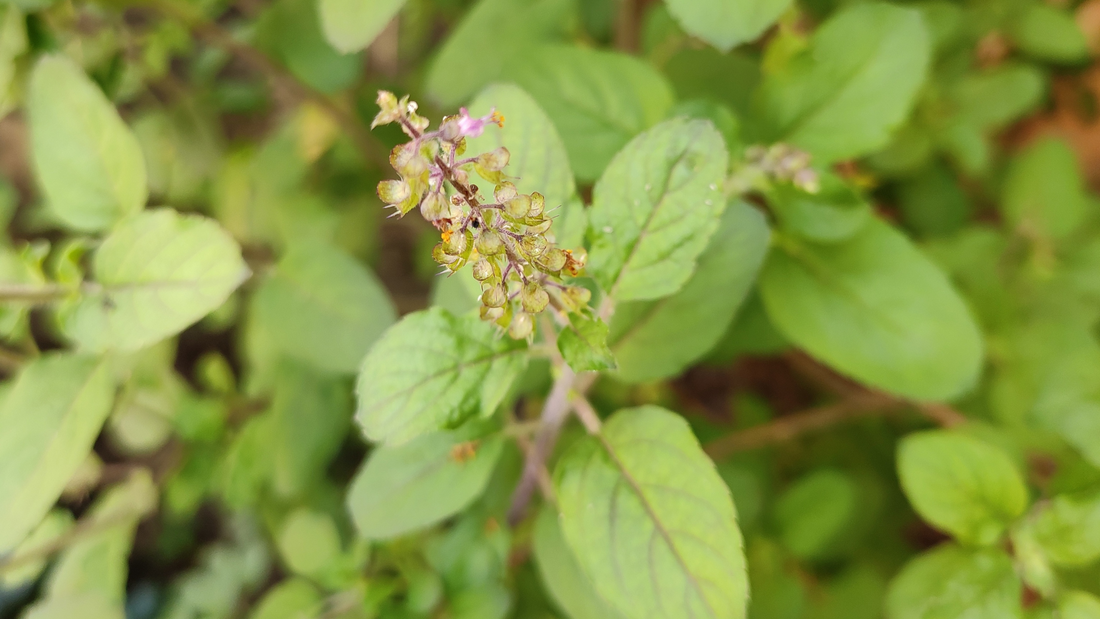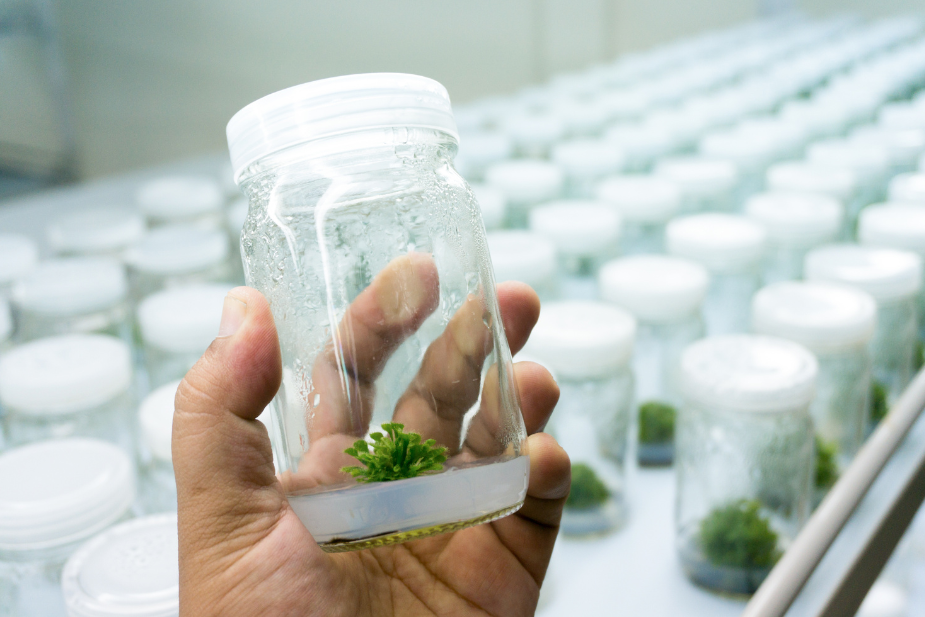
Tissue Culture of Holy Basil
As a content and community manager, I leverage my expertise in plant biotechnology, passion for tissue culture, and writing skills to create compelling articles, simplifying intricate scientific concepts, and address your inquiries. As a dedicated science communicator, I strive to spark curiosity and foster a love for science in my audience.


Overview
Holy Basil, also commonly known as Tulsi or Tulasi, is one of the widely known medicinal plants. Because of its beneficial properties, the plant is also religiously worshiped in some countries, like India. In Ayurveda, basil is known as “The Incomparable One,” “Mother Medicine of Nature” and “The Queen of Herbs,” and is revered as an “elixir of life”.

Hundreds of plant and animal studies have proved the diverse medicinal value of the Basil plant. It has been found rich in unique combinations of actions, such as Antimicrobial (including antiviral, antifungal, antibacterial, antiprotozoal, antimalarial, and anthelmintic), mosquito repellent, anti-diarrheal, anti-oxidant, anti-cataract, anti-inflammatory, chemopreventive, radioprotective, anti-carcinogenic, analgesic, immunomodulatory, and many more.

Holy Basil is scientifically known as Ocimum sanctum or Ocimum tenuiflorum. It belongs to the family of Lamiaceae. The plant is native to the Indian subcontinent and extensively spread and cultivated throughout Southeast Asian Tropics.
Because of its medicinal and therapeutic potential, and spiritual values, the plant is heavily grown throughout the world. However, little is known about the alternative propagation systems of the holy Basil plant, leaving traditional approaches.
Thus, this article answers if the plant can be grown using an advanced in vitro technique, known as tissue culture and if yes, how it can be done.
Holy Basil Description
Holy basil is an erect, branched, annual, or perennial shrub with a hairy stem. Its leaves are green or purple, simple, and petiolated with an ovate blade. It grows up to a height of 1 meter or 3.3 feet. Its fruits are nutlets and produce numerous seeds.

Conventionally Tulsi is grown either by sowing seeds in late spring or early summer or using 10-15 cm terminal cuttings and planted during the October-December months. The cutting should contain 8-10 nodes and the first 2-3 pairs of leaves. This approach gives you whole healthy germinating plants in about 4-6 weeks.
However, one limitation of growing the plant using seed is poor germination. Another challenge of growing tulsi using traditional approaches is its susceptibility to pests and pathogens. Furthermore, if your goal is to obtain some chemical constituents of the plant, secondary metabolites, or extract oil, the technique won’t offer satisfying results. In many cases, it has been found that the ability of the plant to cross-pollinate, hinders farmers from producing true-to-type plants using conventional techniques.

Tissue culture of Ocimum sanctum
Holy Basil is widely grown for its aromatic leaves, spiritual values, and medicinal and therapeutic properties. However, limitations observed while growing the plant using a conventional approach, such as disease susceptibility, producing true-to-type plants, and slow germination, hinder the production of plants for use at a commercial scale. Furthermore, exploiting these plants from the natural environment can also threaten their existence and push them to the brim of extinction.

The solution to all these problems is the use of advanced technology that helps growers overcome these limitations and produce plants at a commercial scale without too much exploitation. And, this can be offered by the tissue culture technique.
Tissue culture, also known as micropropagation, is a technique of growing plants using a few tissues in an artificial environment. The technique offers multiple advantages over conventional propagation techniques, such as:
- The new plantlets can be grown in a short amount of time.
- Only a small amount of initial plant tissue is required.
- The new plantlets and plants are more likely to be free of viruses and diseases.
- The process is not dependent on the seasons and can be done throughout the year.
- You need only a relatively small space to perform the process (ten times the plants in one-tenth of the space).
- On a larger scale, the tissue culture process helps to supply the consumer market with new subspecies and variety.
- People looking to cultivate challenging plants such as specific breeds of orchids find more success with the tissue culture process than with traditional soil.

Procedure to Tissue Culture of Holy Basil
The given procedure of tulsi micropropagation is taken from the study of Mohammad, A. H. M. J., Imdadul, H. S., Md, M. S., A, N. M. R. B. R., Nilufa, A. B., Md, R. I., & Md, N. (2016). In vitro regeneration of a common medicinal plant, Ocimum sanctum L. for mass propagation. African Journal of Biotechnology, 15(24), 1269–1275. doi:10.5897/ajb2015.15200
- Collect shoot tips from a healthy mother plant.
- Wash the explant under running tap water.
- Treat the explant with 4-5 drops of savlon with 2-3 drops of Tween-20.
- Wash the explant with distilled water.
- Suspend the explant in 0.1% (w/v) HgCl2 (or 1% sodium hypochlorite) solution for 7 min.
- Then, rinse the explant five times with sterile distilled water.
- Cut the explant to 3-4 cm in length.

- Prepare shoot initiation media using full-strength MS media, 3% sugar, and 1.0% agar and supplement with 2.0 mg/l BAP in a mixture of 0.5 mg/l NAA. adjust the pH of the media to 5.8.
- Autoclave the media at 121-degree celsius and 15 lbs for 20 minutes.
- Transfer the explant to the prepared culture medium.
- Incubate the cultures at 25±2°C under the cool fluorescent light at 16 h light and 8 h darkness.

- Prepare rooting media with MS medium supplemented with 1.0 mg/l NAA.
- Autoclave the media at 121-degree celsius and 15 lbs for 20 minutes.
- Transfer the 1-3 cm shoots to the rooting medium.
- Incubate the cultures at 25±2°C under the cool fluorescent light at 16 h light and 8 h darkness.
- After a few weeks, you will have regenerated plantlets ready to be transferred to the greenhouse.

How Plant Cell Technology Helps You To Achieve Your Tissue Culture Goals?
Plant Cell Technology is helping tissue culturists worldwide by providing unique and world-class products and services that smoothen their process. The PCT Store has MS media, agar, gellan gum, Plant Preservative Mixture (PPM), culture vessels, Biocoupler(TM), and masks in its store to facilitate your processes.

And, that’s not it! Plant Cell Technology also offers consultation services to culturists of all sizes that help to get instant solutions to your tissue culture problems.
You can either book a one-on-one consultation call or a physical visit to your lab. We help you at every step of the tissue culture process, ranging from establishing a tissue culture lab to preventing contamination problems or any specific challenges in your process.
So, visit plantcelltechnology.com today and learn more about our products and services and how they help you excel in your tissue culture processes.
Happy Culturing!
Blog Categories
View by Level
Popular Blogs

Exploring Somatic Embryogenesis: Techniques and Applications
What Is Somatic Embryogenesis? Before we talk about somatic embryogenesis, do you know the difference between somatic cells and zygotic...
Read More
DKW Media: Definition, Use, and Applications
Introduction In vitro plants need nutrients to grow in a lab environment. These media are composed of micronutrients and macronutrients...
Read MoreSubscribe to Our Newsletter







Join the conversation
Your email address will not be published. Required fields are marked